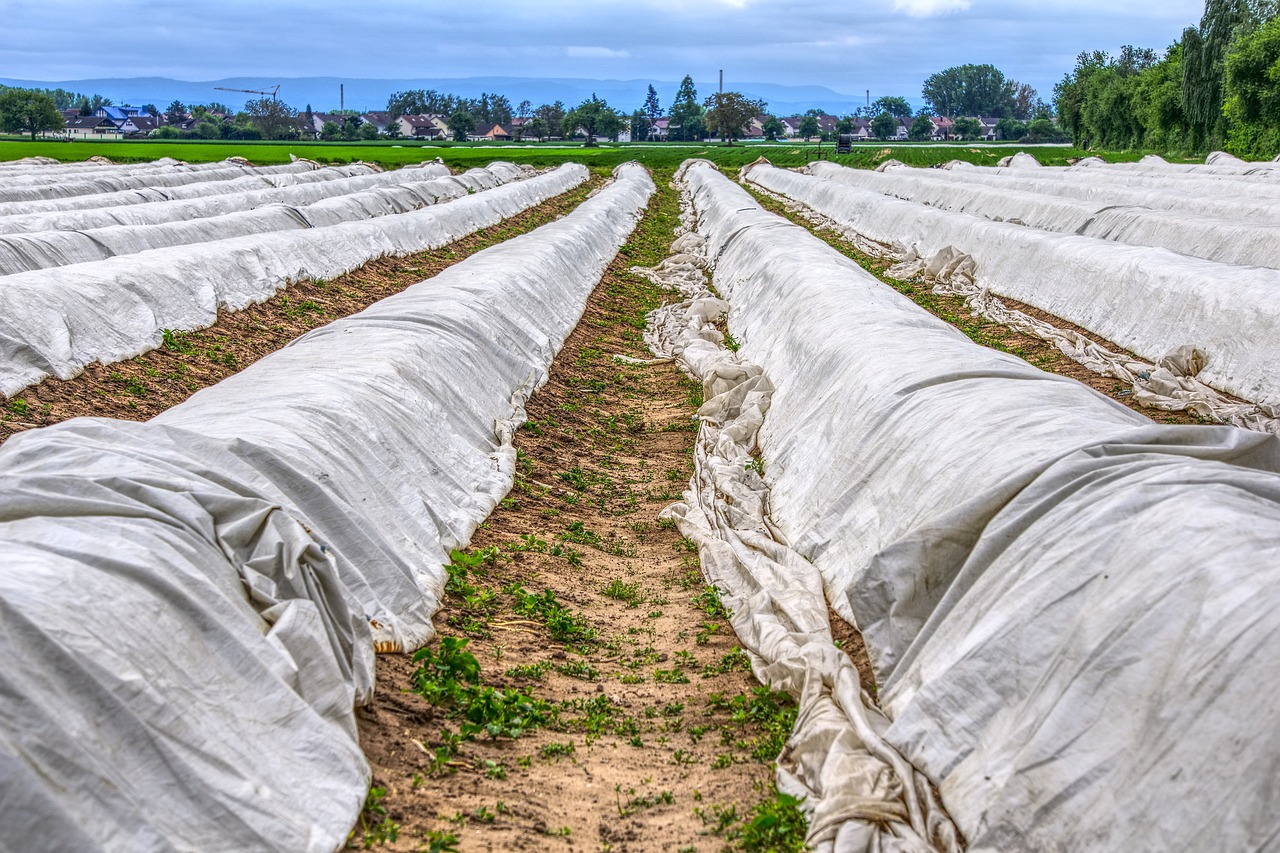
Tarpaulins, also known as tarps, are large, heavy-duty sheets made from waterproof materials such as polyester, canvas, and PVC. While they are most commonly used for sheltering goods during transport or storage, they are also incredibly useful in agriculture. Here are some of the ways that tarpaulins can benefit farmers and agricultural workers.
Protection from Weather
Agricultural products are highly sensitive to changes in weather conditions, such as excessive sun, rain, wind, or snow. When crops are exposed to too much sunlight, they may dry out or suffer from sunburn, which can reduce yields and quality. Likewise, heavy rain or snow can damage crops, causing them to rot or grow moldy. Wind can also be a problem, as it can cause crops to become uprooted or damaged.
Tarpaulins can provide a protective barrier against all of these weather conditions. For example, a tarpaulin can be used to cover a crop or plant bed to shield them from excessive sun exposure or heavy rain. Similarly, tarpaulins can be used to create windbreaks that protect crops from being blown over or damaged by high winds.
In addition to protecting crops, tarpaulins can also be used to protect agricultural equipment and machinery from the elements. This can help prolong the lifespan of equipment and reduce maintenance costs.
Crop Storage
One of the most common uses of tarpaulins in agriculture is for crop storage. Tarpaulins can be used to cover piles of hay, straw, or other crops that need to be stored outside. By covering these piles with a tarpaulin, farmers can protect their crops from moisture, insects, and other pests.
Tarpaulins can also be used to cover storage bins or silos that contain grains or other crops. By creating a seal between the tarpaulin and the storage container, farmers can prevent moisture from getting inside and spoiling the crops.
Pest Control
Insects and other pests can be a significant problem for farmers, as they can destroy crops and cause significant economic losses. Tarpaulins can be used as a pest control measure in several ways.
For example, tarpaulins can be used to cover a crop or plant bed, creating a physical barrier that prevents insects from reaching the plants. This can be especially useful for organic farmers, who do not use pesticides and rely on natural methods of pest control.
Tarpaulins can also be used to cover compost piles, preventing flies and other insects from laying eggs in the compost. This can help reduce the population of pests on the farm and improve overall sanitation.
Greenhouse Covering
Tarpaulins can also be used as a covering for greenhouses. Greenhouses are used to create an environment that is optimal for growing plants, but they require a covering to trap heat and humidity. Tarpaulins can be an affordable alternative to traditional greenhouse covers.
In addition, tarpaulins can be used to create temporary greenhouses. For example, if a farmer needs to protect a crop from frost or other adverse weather conditions, they can use a tarpaulin to create a makeshift greenhouse.
Irrigation and Water Management
Tarpaulins can also be used in irrigation and water management systems. For example, tarpaulins can be used to create small ponds or reservoirs that can be used to store water for irrigation purposes. This can be especially useful in areas where water is scarce, as it allows farmers to collect and store water during the rainy season for use during the dry season.
Tarpaulins can also be used to cover irrigation canals or ditches, reducing water evaporation and preventing debris from entering the system. This can help conserve water and improve the efficiency of irrigation systems.
Livestock Shelter
Tarpaulins can be used to provide shelter for livestock. Farmers can use tarpaulins to create temporary or permanent structures to protect animals from extreme weather conditions. For example, tarpaulins can be used to create shade structures to protect animals from the hot sun or rain. They can also be used to cover animal pens or shelters, providing additional protection from the elements.
Tarpaulins can also be used to cover livestock feed, preventing it from getting wet or contaminated by pests. By protecting feed with a tarpaulin, farmers can reduce waste and ensure that their animals have access to high-quality feed.
Erosion Control
Soil erosion can be a significant problem for farmers, as it can lead to reduced soil fertility and crop yields. Tarpaulins can be used as an erosion control measure in several ways.
For example, tarpaulins can be used to cover bare soil, preventing erosion caused by wind or water. They can also be used to cover slopes or embankments, reducing the risk of soil erosion. In addition, tarpaulins can be used to create temporary dams or barriers to divert water away from areas that are prone to erosion.
Conclusion
Agriculture tarpaulin is a versatile tool that can be used in many different ways in agriculture. They can protect crops and equipment from the elements, provide shelter for livestock, and help control pests and soil erosion. Tarpaulins can also be an affordable and effective alternative to traditional greenhouse covers and irrigation systems.
For farmers, tarpaulins are an important investment that can help protect their crops and livestock, improve their water management systems, and increase their yields. With so many benefits, it’s easy to see why tarpaulins are becoming an increasingly popular tool in agriculture.
